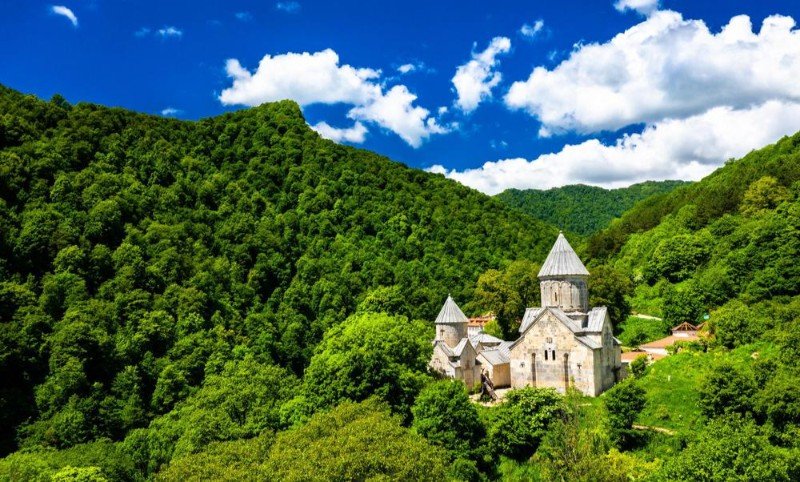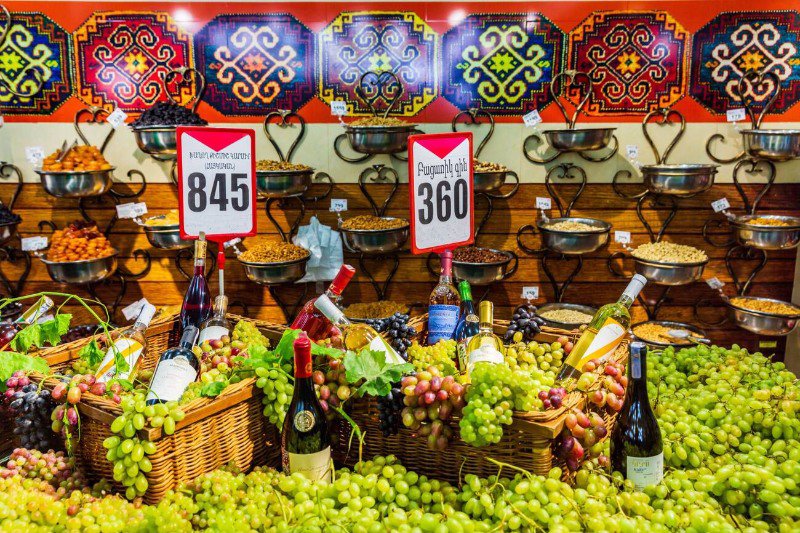Haghartsin Monastery is a medieval religious and cultural complex located in Tavush Province in Armenia, approximately 18 kilometers from Dilijan, surrounded by beautiful forested mountains. Armenic Tours presents this in-depth guide to help you explore one of Armenia’s most significant spiritual sites.
The Meaning of the Name Haghartsin
According to local tradition, the name Haghartsin comes from a legendary event. During the consecration of the monastery, an eagle flew above the main church. The word “Hagh” means “play” and “Artsin” refers to “eagle,” giving the monastery its name, “The Playing Eagle.”
Historical Background of Haghartsin Monastery
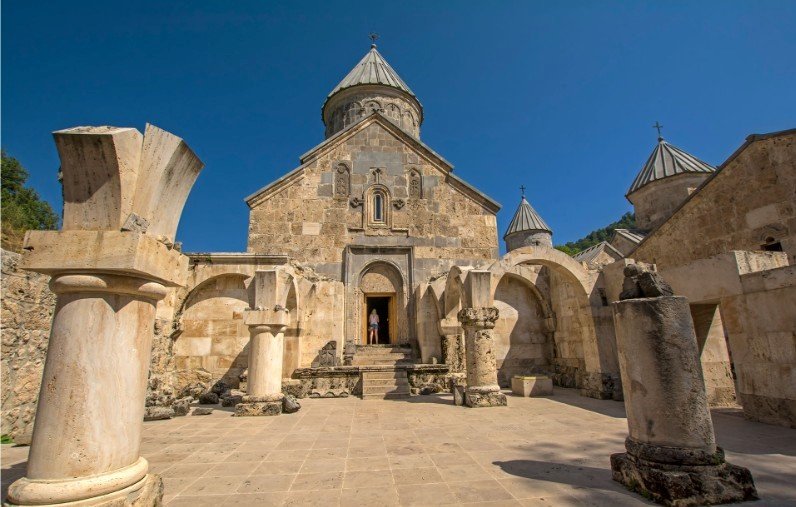
The exact founding date of Haghartsin Monastery is unknown. Historical sources, however, confirm its existence long before the construction of Goshavank Monastery. The respected historian Kirakos Gandzaketsi recorded that Khachatur Taronatsi, the abbot of Haghartsin, revitalized the monastery, which had previously fallen into ruin.
The majority of Haghartsin Monastery’s structures were built during the 13th century. The oldest church, Saint Gregory, has no surviving inscriptions, so its construction date remains uncertain.
In the 11th century, the monastery suffered destruction during the Seljuk invasions. It was later restored in the 12th century under the direction of King George III of Georgia and Armenian nobility. The last significant restoration occurred in the late 1960s. A complete restoration was funded by Sheikh Sultan bin Muhammad Al-Qasimi of Sharjah, with work starting in 2005 and finishing in 2012.
Architectural Highlights of Haghartsin Monastery
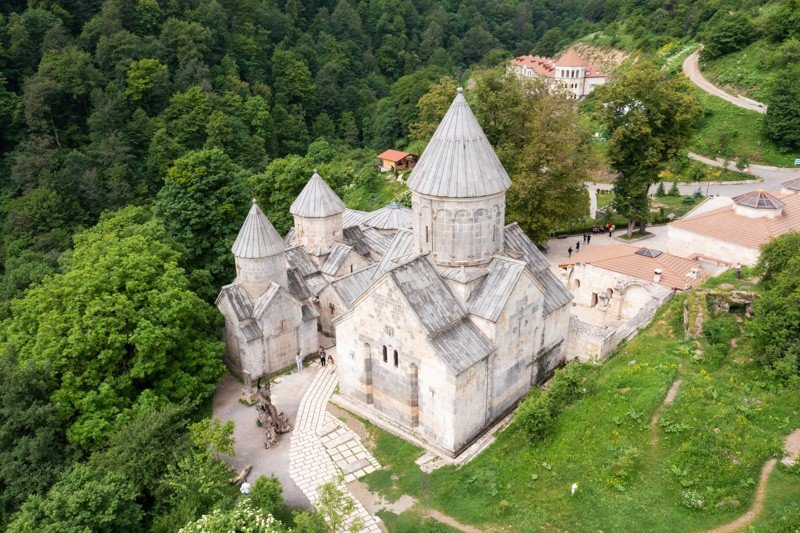
The complex includes four churches, two porches (one of which is partially destroyed), a refectory, chapels, and numerous Khachkars (cross-stones).
Saint Gregory Church
Saint Gregory Church is the oldest structure in the monastery. Its construction date is unknown. It is a domed hall with a cross-shaped interior and a rectangular exterior, built from yellow porous stone. The attached porch to the west, built in the late 12th century, was supported by nobleman Ivane Zakarian.
The poche’s walls and entrance are decorated with stone inscriptions, including records of battles and victories by the Zakarian brothers. Notable carvings inside the porch feature figures like Father Daniel and Simeon the steward.
Katoghike Church
Located north of Saint Gregory Church, Katoghike Church was constructed in 1194 by Khald, son of Harbi. This small, single-nave church was built from polished bluish basalt stones and has a barrel-vaulted roof.
Saint Stephen Church
Built in 1244, Saint Stephen Church is a domed structure with a rectangular exterior and cross-shaped interior. Its stone sundial above the southern window is a rare detail. Restoration inscriptions from the 17th century can also be found on the walls.
Master builders left engraved initials on various stones throughout the church, preserving their marks across centuries.
Holy Mother of God Church
Situated northeast of the main group of buildings, this spacious domed hall features both bluish basalt and yellow limestone. Inscriptions suggest the church was built or renovated in 1071 and 1281.
A relief sculpture on the eastern facade shows builders holding a model of the church with an eagle atop, further connecting to the monastery’s legendary name.
Only fragments of the western porch remain today.
The Refectory
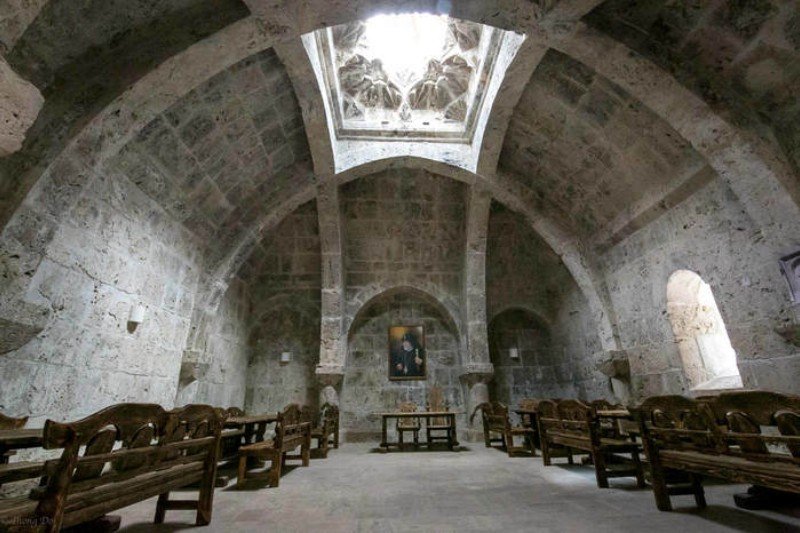
The refectory, located in the northwest corner of the complex, is a remarkable example of medieval secular Armenian architecture. Built in 1248 with the support of a benefactor named Kutas, this hall features a vaulted ceiling supported by columns and beautiful skylights.
Stone benches along the walls indicate where monks once gathered for meals. The name “Minas” carved in the corner likely belongs to the chief architect.
Royal Tomb
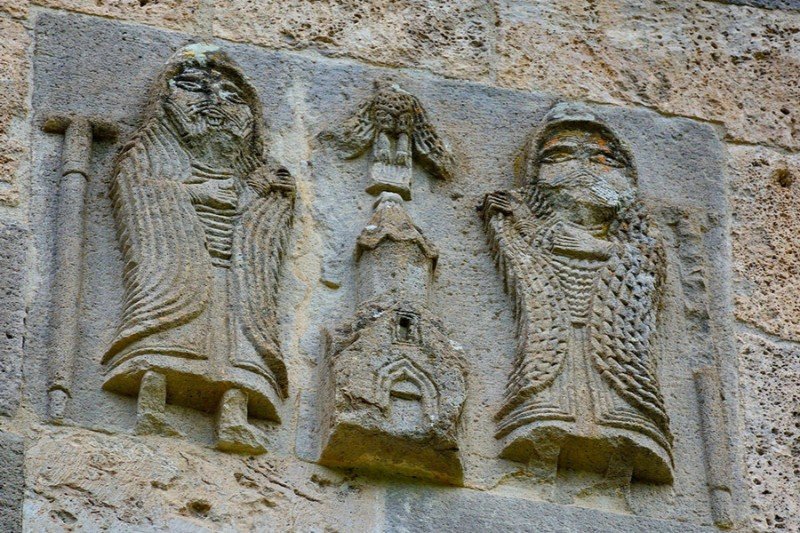
Located beneath the southern wall of Saint Gregory’s porch, this small chapel contains three tombstones. One of them is inscribed with “Smbat King,” suggesting the royal tomb may belong to the Kyurikian dynasty.
Best Time to Visit Haghartsin Monastery
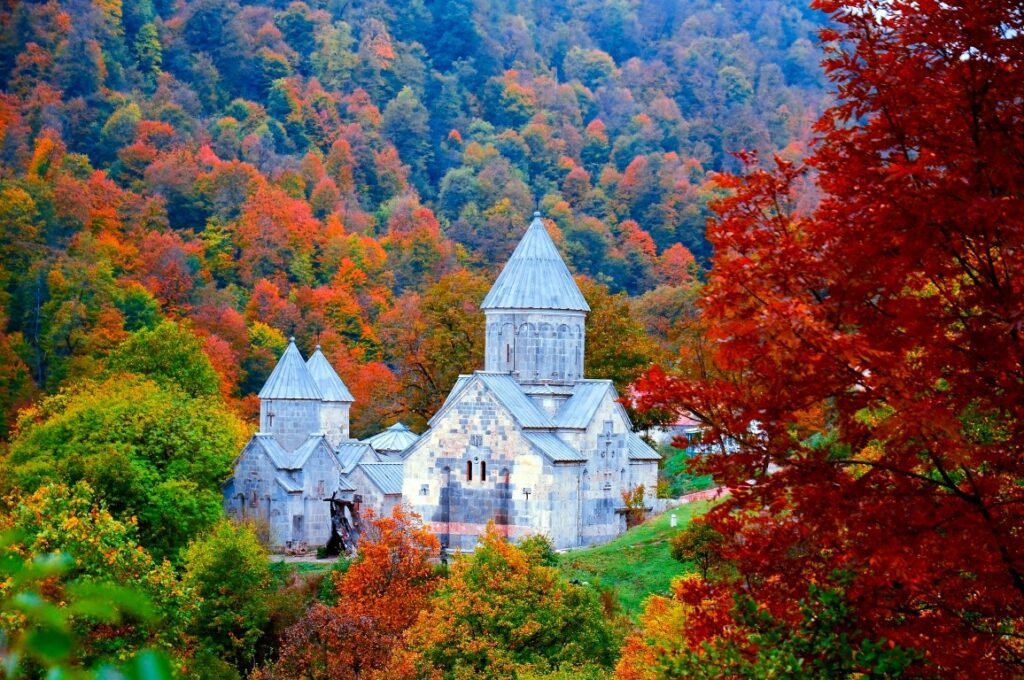
The best time to visit Haghartsin Monastery is from May to October when the weather in Tavush Province is mild, and the surrounding forests are lush and green. During these months, visitors can fully enjoy the natural beauty that enhances the monastery’s peaceful atmosphere. Spring and summer offer blooming landscapes, while early autumn covers the area in beautiful shades of gold and red. Winters in this region can be cold and snowy, which may limit access due to icy roads. For comfortable travel and clear views of Haghartsin Monastery’s architecture, the warmer months are ideal. Armenic Tours recommends visiting in late spring or early autumn to avoid both heavy summer crowds and winter weather challenges.
Surrounding Sightseeing Near Haghartsin Monastery
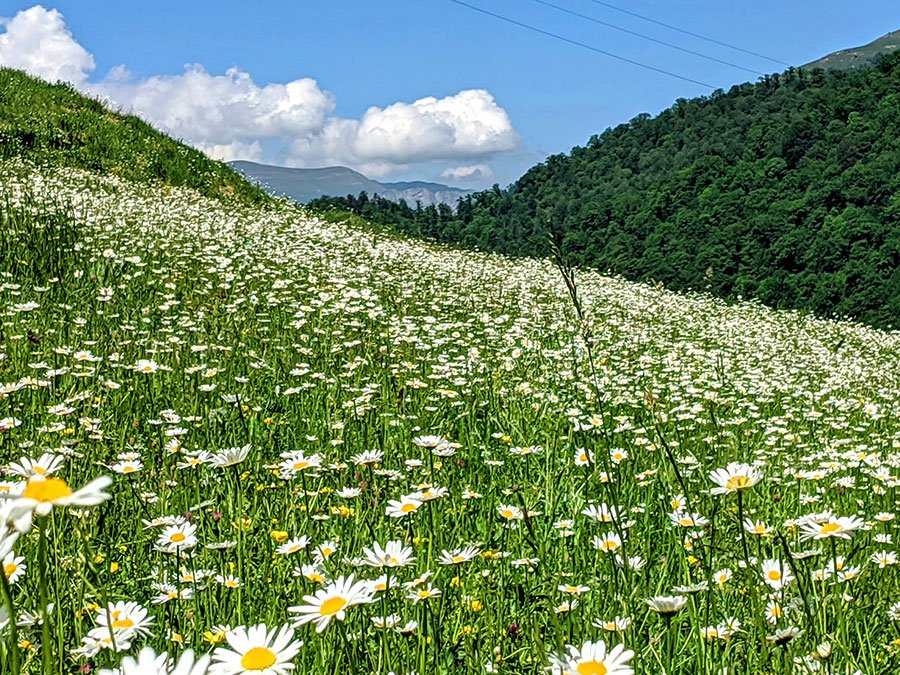
The area around Haghartsin Monastery offers many beautiful sightseeing opportunities that visitors can explore with Armenic Tours. Just a short drive away is Dilijan National Park, known for its peaceful hiking trails, rich forests, and fresh mountain air. The charming town of Dilijan, often called the “Armenian Switzerland,” offers cozy cafes, traditional craft shops, and scenic viewpoints. Visitors can also explore Parz Lake, a calm, forested lake perfect for boating and picnics. Another nearby attraction is Goshavank Monastery, another masterpiece of medieval Armenian architecture. With Armenic Tours, travelers can easily plan a full day of exploration, combining cultural heritage with stunning natural landscapes in this unique part of Armenia.
Conclusion
Haghartsin Monastery stands as a timeless monument of Armenia’s rich cultural and spiritual heritage. With its unique architecture, captivating legends, and historical depth, it continues to draw visitors from around the world. Armenic Tours invites you to experience the profound history and beauty of Haghartsin Monastery through carefully curated tours that ensure an unforgettable journey.
FAQ
Where is Haghartsin Monastery located
Haghartsin Monastery is located in Tavush Province, Armenia, about 18 kilometers from Dilijan, surrounded by lush forested mountains.
When was Haghartsin Monastery built
The earliest parts of Haghartsin Monastery date back to before the 12th century, with most of the current structures built in the 13th century.
How was Haghartsin Monastery restored
The last full restoration was funded in 2005 by Sheikh Sultan bin Muhammad Al-Qasimi and was completed in 2012, bringing the monastery back to its full glory.


